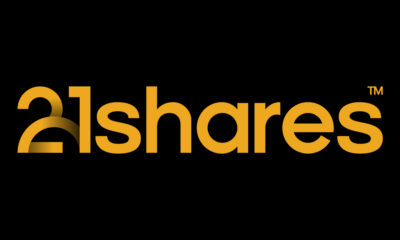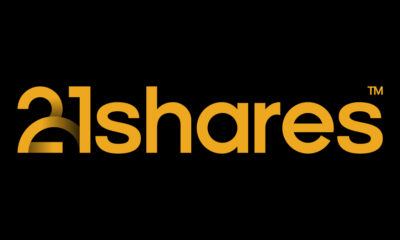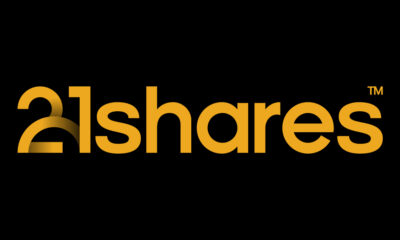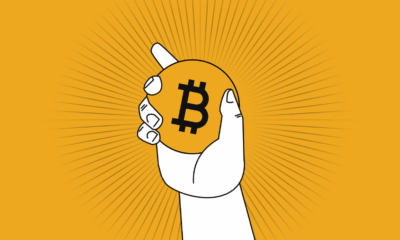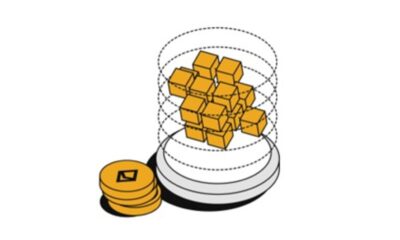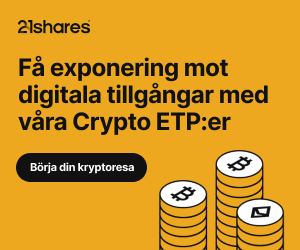Nyheter
Exploits, Liquidations, and What Lies Beneath the Surface
Publicerad
2 år sedanden
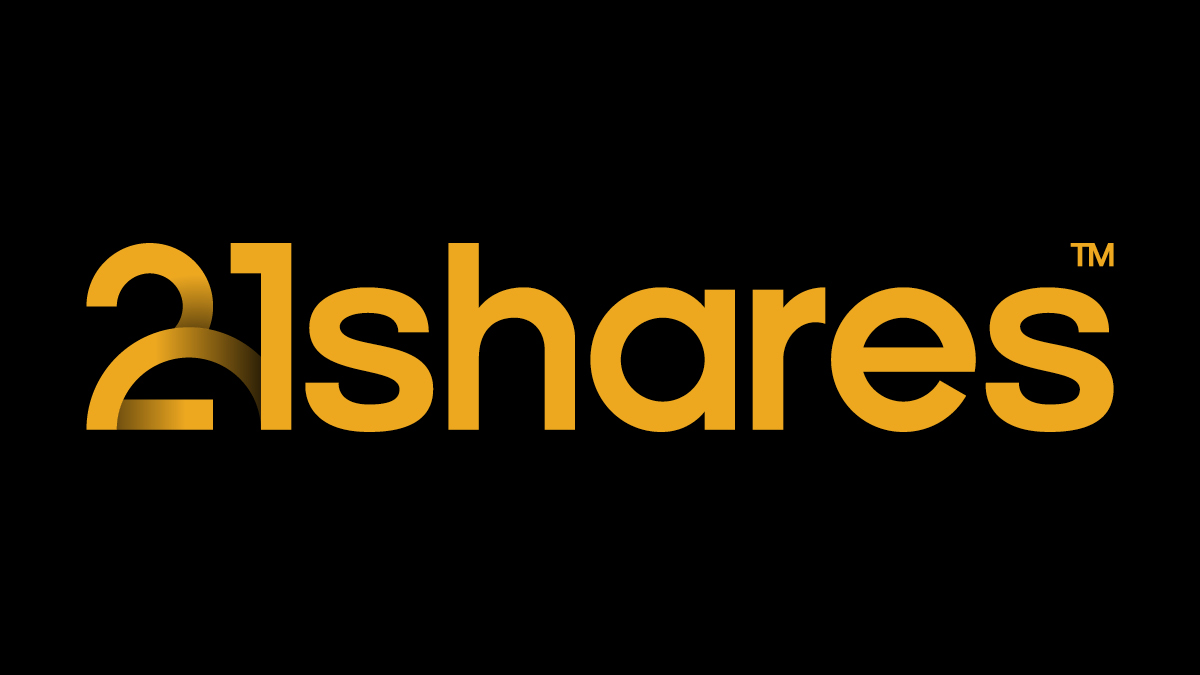
Crypto’s market cap declined by 6% over the past month. The main reason for this drop is the market’s low volatility, following Curve’s $62M exploit on July 30, until August 17. A combination of events could have influenced this sell-off, including a possible upcoming interest rate hike, the Ripple case getting longer, and rumors about SpaceX liquidating its Bitcoin holdings. Bitcoin and Ethereum fell by 6.62% and 8.19%, respectively, over the past month. The largest decentralized exchange by total value locked (TVL), Uniswap, suffered the most in August, declining by 29.05%. On the other hand, Curve’s TVL rebounded, growing by 19.78% over the past month, indicating that the 65.9% recovered funds remain on-chain.
Figure 1: Price and TVL Development of Major Crypto Sectors in August
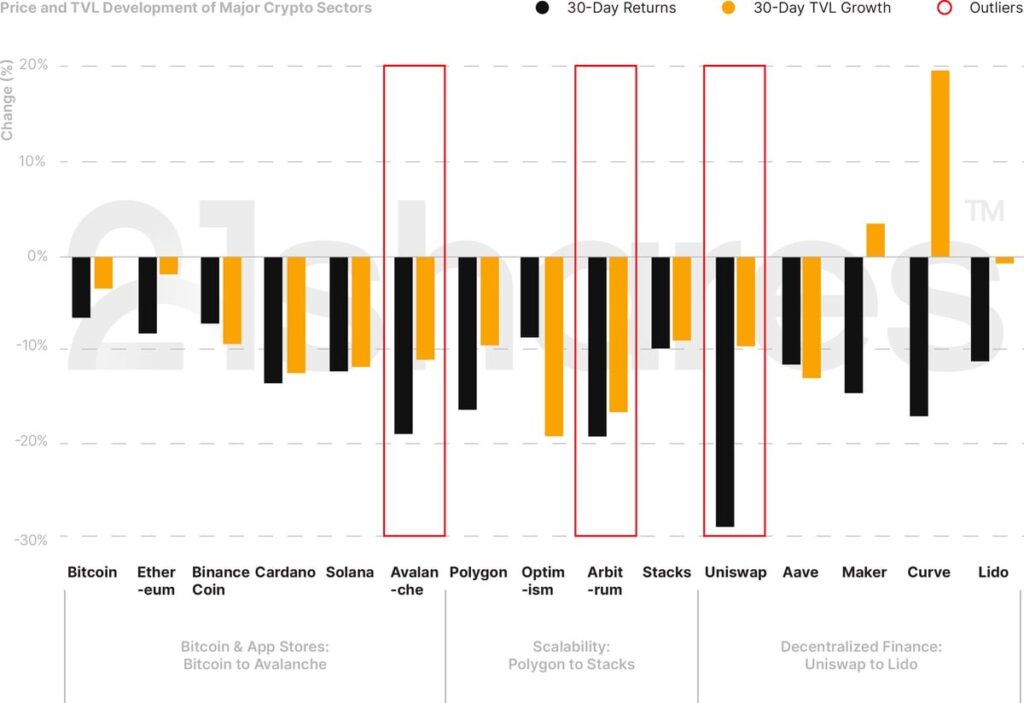
Source: 21shares, CoinGecko, DeFi Llama. Data as of August 30 close.
5 Trends to Remember from August
• Declining market activity, FUD, and macro backdrop fueling the largest liquidations since FTX
In late August, the crypto market experienced approximately $1.04 billion in liquidations, with around $833 million from long positions. Various factors fueled the chain of liquidations, notably the Fed’s minutes emphasizing ongoing inflation and the potential for more interest rate hikes. This, combined with elevated US long-term bond yields and a hawkish Fed stance, prompted short-term risk aversion that impacted both the crypto and stock markets. This relationship is highlighted by Bitcoin’s renewed positive correlation with S&P 500 and Nasdaq, reaching 0.8 and 0.72, respectively, and implying that the three markets are once again moving in tandem.
The downturn was also exacerbated by erroneous reports of SpaceX liquidating its Bitcoin holdings. While many speculated about a potential sell-off, it’s important to note that write-downs are a standard accounting practice and do not necessarily imply that the investments have been sold or liquidated. In addition, global markets experienced a mild shock due to news of Evergrande’s bankruptcy filing under US Chapter 15, raising concerns about its impact on the global real estate market.
Finally, the SEC’s ability to appeal specific judgments about the Ripple case added to the negative sentiment, which we will briefly touch on next. Although August’s events pale in comparison to the gravity of the FTX debacle, Bitcoin’s annualized volatility recently hit its lowest level in over five years, which indicated an anticipated market breakout. That said, the market modestly rebounded on the news of a Federal Appeals Court ruling siding with Grayscale in their case against the SEC on converting GBTC into a spot ETF.
Figure 2: Liquidations Across the Crypto Market
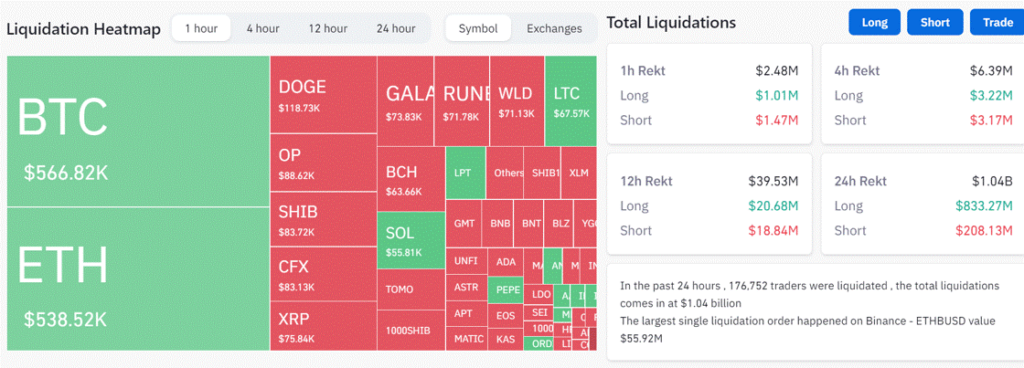
Source: Coinglass (on August 17)
• Ripple Continues Saving Grace by Forging New TradFi Partnerships
On August 18, the SEC filed an interlocutory appeal against the inconclusive summary order in the Ripple case issued by Federal Judge Analisa Torres on July 13. The appeal primarily objects to the court’s view that the programmatic sales of XRP (on exchanges) are not considered securities, highlighting a disagreement among district courts regarding the controlling issues. In response, XRP fell by around 30% over the past month. Ripple has until September 1 to submit a response to the SEC’s appeal. There are no definite dates for the trial yet; Judge Torres suggested that the court would be in session later in the second half of 2024. Until then, we expect XRP to experience speculation to drive its price movement while Ripple continues to secure strategic partnerships to enforce its value proposition as a crypto-native software solution for players in traditional finance. In its latest move, Ripple is collaborating with fintech giant MasterCard and ConSensys, among others, to build a central bank digital currency (CBDC) program to support central banks and governments in pursuing a digital currency. The program will explore the design of CBDCs, interoperability, and limitations.
• Did Tether’s Profit Surge Lure PayPal’s Venture into Stablecoins?
The issuer behind the biggest US-dollar stablecoin is now the 11th-largest holder of Bitcoin. Following their announced plans to convert profits into Bitcoin, Tether has amassed 55K BTC (~$1.6B). The latest attestation report shows a ~$800M rise in excess reserves in Q2, reaching $3.3B. This significant development enhances demand for Bitcoin’s role in corporate treasury management. Conversely, Tether should convert surplus BTC and profits into cash to fortify the company’s resilience against unforeseen issues. For context, Tether’s cash reserves dropped from $5.3B in December 2022 to $90M in Q2 23, a concern for an $85B stablecoin, despite access to liquid instruments like US treasuries, and REPOs. Finally, although not confirmed by Tether, the wallet holdings align with the issuer’s quarterly holdings. That said, Tether’s thriving business endeavor might have piqued the curiosity of traditional financial behemoths cautiously entering the stablecoin landscape.
Figure 3: Tether’s Potential BTC Holdings

Source: 21.co on Dune
On August 7, Paypal partnered with stablecoin issuer Paxos to launch their own USD-pegged stablecoin, PYUSD, built on Ethereum and fully backed by U.S. dollar deposits, short-term U.S. treasuries and similar cash equivalents. According to the press release, eligible U.S. customers will be able to pay for their purchases using PYUSD in the same manner that Gnosis Pay announced it will empower European customers to pay for their purchases with Monerium’s euro-pegged stablecoin (EURe) via its Visa card, with a convergence mechanism running in the backend. This trend aims to boost mass adoption by solving two ailing issues stifling the industry, by providing users with a familiar user interface while being compliant to regulations. Moreover, onboarding more traditional players from the second generation of the internet shows the institutional appetite for the stablecoin subsector, whose market cap is valued at $125B, with USDT dominating by 66%. More traditional players, especially those with existing tools to their advantage, will likely follow suit, aiming to topple this dominance in their favor. In the grand scheme of things, the more regulated players in the space, the healthier the market.
• Coinbase Scores Two Points for Adoption
After a year in application, Coinbase won regulatory approval to offer crypto futures to its retail clients in the U.S. According to a recent study, 58.8 million Americans hold crypto, up 18% from the previous year. This move can bring more American retail investors into crypto, thanks to regulations, an essential element for mass adoption. The trading volume of the global crypto derivatives market represents almost 75% of the entire crypto market. The Coinbase Derivatives Exchange has established a deep liquidity pool with $4.7B worth of BTC and $2B worth of ETH futures traded in notional volume in 2023. We’re also seeing more adoption on the infrastructure level, with Coinbase’s scaling solution Base launching on Ethereum on August 9, attracting $226.59M in assets under management.
• Visa’s Experimentations to Abstract the Complexity of Crypto
After Visa initially announced their experiment utilizing Account Abstraction (AA) to streamline crypto native payments on top of Ethereum back in May, the financial services giant revealed the piloted project’s latest updates. Namely, leveraging the ERC-4337 standard, more commonly known as AA, Visa abstracted the process of paying gas fees in ETH using a credit card. As AA allows for asset conversion in the backend, users will not have to worry about holding the right native token to pay for transaction costs. Thus, users would be met with the flexibility of paying with their cards or any other ETH-based token, and the AA smart contract will simply trigger the conversion via what’s known as a paymaster smart contract that sponsors transactions on users’ behalf. That said, Visa’s experiment has the power and potential to transform the crypto native ecosystem and make them more accessible using the average users’ traditional financial instruments, and could, thus, catalyze the adoption of native blockchain applications without users necessarily becoming aware of the technical intricacies.
Figure 4: Visa’s Process to Abstract ETH Gas Fees
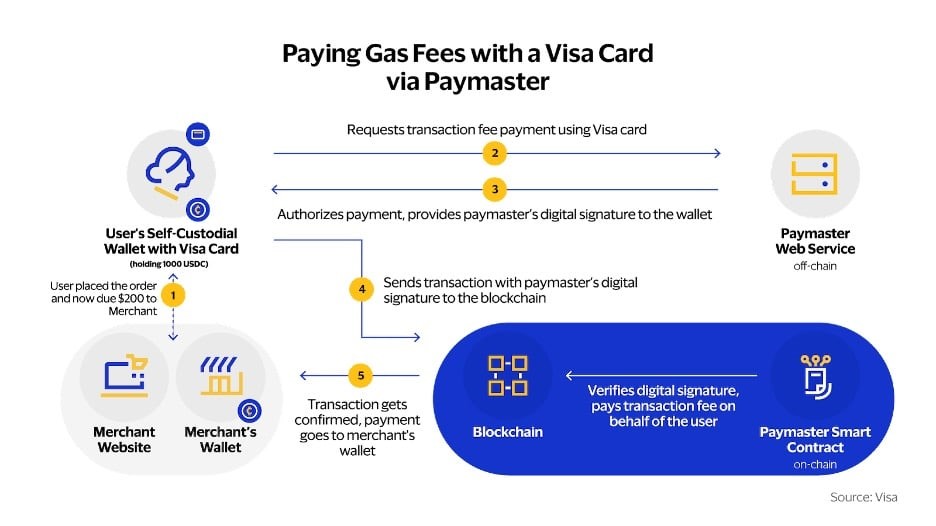
Source: Visa
What to Expect
• OP Stack Establishing its Presence and EVM Maintaining Dominance
Optimism’s modular framework, OP Stack, is maintaining its position as the leading scaling solution for Ethereum, with established players like Binance, Coinbase, Worldcoin and A16Z all opting to leverage the solution to build their customized networks. Coinbase launched public access to its scaling solution dubbed Base in August, leveraging the OP Stack. The scaling solution Base experienced tremendous growth, amassing close to ~$275M in AuM around two months and generating $3.2M in revenue, of which Coinbase will share 2.5% of the total amount with the OP Stack to help develop the broader Optimism ecosystem, while welcoming the deployment of some of DeFi blue chips like Uniswap, Aave, 1Inch and others.
Figure 5: Coinbase Scaling Solution AuM
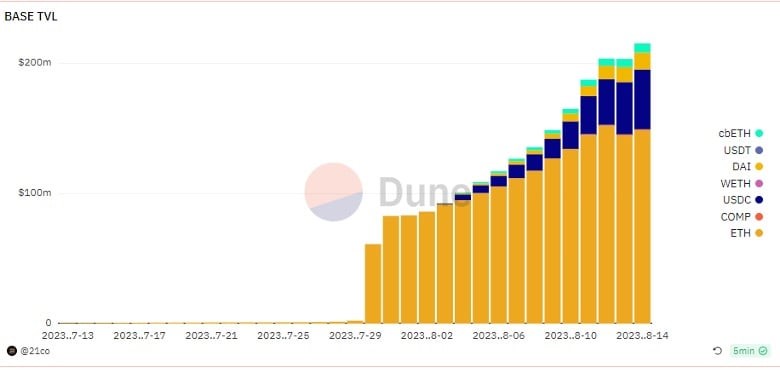
Source: 21.co on Dune
While the initial shift was prompted by a meme coin frenzy, the ongoing surge in user activity signifies enthusiasm for the Ethereum ecosystem. Moreover, Base holds significant growth potential due to Coinbase’s extensive 110M user base, which can seamlessly transition to the on-chain ecosystem through user-friendly interfaces. In line with this, Coinbase revealed “on-chain summer”, an initiative to introduce users to Base’s vibrant ecosystem and the network’s enhanced performance. The program was a success as Base logged close to 136K daily active users at peak, surpassing Optimism and Polygon. It remains to be seen whether Base can sustain its user base in the long run. However, it will certainly be a key network to look out for over the next few months.
Finally, the enthusiasm for the Ethereum ecosystem has also reverberated across the wider smart contract landscape. For instance, Fantom is considering building an optimistic-based rollup linking to Ethereum, while Celo proposed pivoting into an ETH scaling solution using the OPStack. Binance has similarly launched its own ETH scaling solution dubbed OpBNB, aligning its technical approach with Base. Conclusively, all three decisions stem from the desire to harness Ethereum’s network effects and its liquidity amidst the declining on-chain activity.
Figure 6: Daily Active Addresses of the Four Leading Ethereum Scaling Solutions
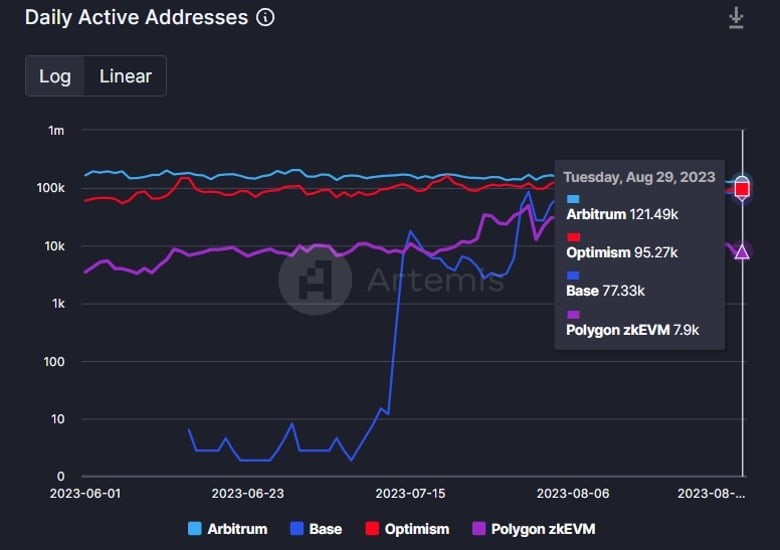
Source: Artemis.xyz
• Where Are Stablecoins Headed?
Coinbase is doubling down on the stablecoin space by taking an equity stake in Circle. While it may not immediately impact investors, as Circle will still be issuing USDC, the move speaks volumes of the level of consolidation the community has reached. The more competition heats up in this space, the tougher it will be for smaller stablecoins to shine, which – in theory – should filter out the ones with weak underlying technology or little added value. Contrarily, with a clear added value, PayPal’s new stablecoin will take some time to catch up with the rally, especially since 90% of the stablecoin’s supply is still in addresses that belong to its issuer, Paxos Trust.
More legal clarity on stablecoins in the U.S. is on the way, and it could be PayPal’s golden ticket to set sail. On August 28, representatives from the Financial Services Committee sent a letter to Federal Reserve Board Chairman Jerome Powell objecting to the Fed’s recent “Creation of Novel Activities Supervision Program,” published a day after PayPal’s PYUSD launch. The supervisory guidelines aim at monitoring stablecoin activities engaged by banks under the Fed’s jurisdiction. In the letter, the Committee wrote that the Fed’s move undermines Congress’ progress on legislation to establish a regulatory framework for payment stablecoins. We believe the Committee’s letter indicates a political will to reach legal clarity, just like the Fed’s move was a strong indicator that stablecoins will inevitably soar in mass adoption.
• The Debut of Friend.tech and the broader Social-Fi movement
Friend.tech, a novel social app launched on Base network, letting users tokenize and trade Twitter account shares. Share prices scale with availability; more shares mean higher prices with a 10% tax split—5% for the protocol and 5% for the Influencer, while shareholders access private chats, exclusive content and deepen social ties with their influencers.
Despite early glitches, Friend.tech’s arrival is noteworthy. It employs Base’s Account Abstraction tech for a smooth on-chain user experience, letting users join with web2 credentials, deposit without a wallet setup, and trade shares fee-free. A web app model also evades Apple/Google limits, facilitating mobile deployment. Finally, Friend.tech integrates finance into social networking, reshaping the relationship to offer both financial and social gains and reflecting what is known as Social Finance (SocialFi).
Impressively, Friend.tech surpasses rivals like Lens protocol, achieving significant visibility in the social vertical. In 10 days, it traded ~$60M worth of shares, with up to $3M in daily fees, exceeding smart-contract platforms in peak hype. Remarkably, at the depth of the bear market, the application drew nearly 127K users, although some were possibly driven by the prospect of an airdrop while being amongst the rare crypto apps capturing the attention of external figures. High-profile personalities like NBA player Grayson Allen, CEO of Y Combinator Garry Tan, and even gaming influencers like FaZe Banks all joined the platform.
Figure 7: Total Trading Volume & # of Traders on Friend.tech
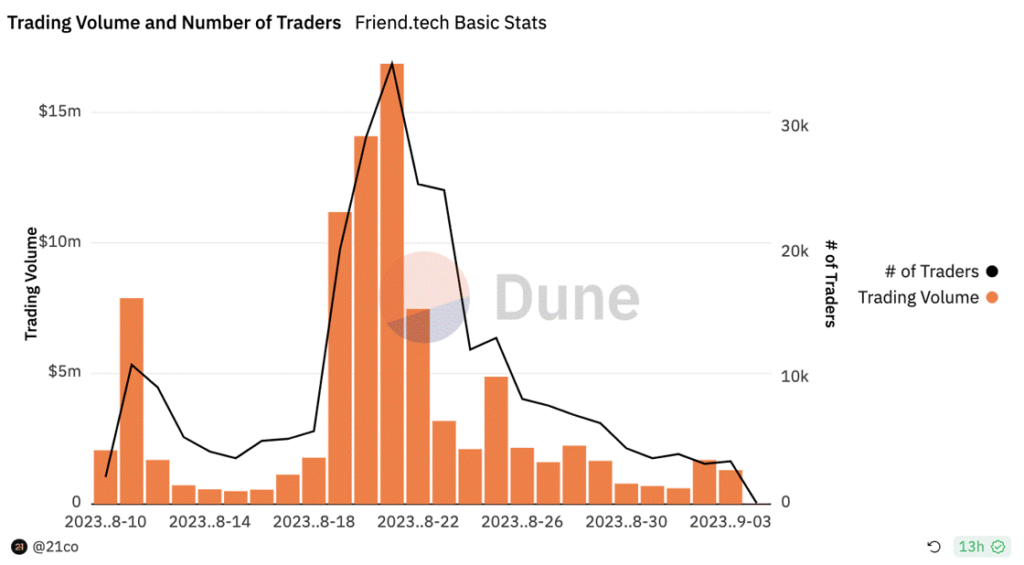
Source: @21co on Dune
In summary, Friend.tech could bring untapped web2 innovations into SocialFi, aligning with web3’s empowerment goals by converging social relationships with financial opportunities. However, pricing and wallet privacy need to be enhanced for trust. Vulnerabilities like linking wallets to Twitter emphasize the exigency for robust privacy safeguards within SocialFi applications to protect the technology’s integrity. Regulatory risks could also arise driven by expectations of user profits and revenue sharing. That said, Friend.tech’s is still worth monitoring as a blueprint for future crypto apps in terms of abstracting crypto’s complexity.
Bookmarks
• Exploits, Liquidations, and What Lies Beneath the Surface.
• Our researcher Tom Wan shared his insights in Blockworks’ webinar: Next-Level Web3 Data Strategies to Ride the Latest Trends.
• We published a dashboard tracking the post-mortem of the Curve exploit; check it out here.
• Have you heard of re-staking your staked ETH? EigenLayer is a new staking primitive that enables the reusing of staked ETH. We built a dashboard to track its progress and adoption. Check it out here.
Next Month’s Calendar
These are the top events we’re closely monitoring in September.
• September 20-22: Messari Annual Event
• September 30: Optimism Token Unlock (3.37%)

Source: 21shares, Forex Factory, CoinMarketCap
Research Newsletter
Each week the 21Shares Research team will publish our data-driven insights into the crypto asset world through this newsletter. Please direct any comments, questions, and words of feedback to research@21shares.com
Disclaimer
The information provided does not constitute a prospectus or other offering material and does not contain or constitute an offer to sell or a solicitation of any offer to buy securities in any jurisdiction. Some of the information published herein may contain forward-looking statements. Readers are cautioned that any such forward-looking statements are not guarantees of future performance and involve risks and uncertainties and that actual results may differ materially from those in the forward-looking statements as a result of various factors. The information contained herein may not be considered as economic, legal, tax or other advice and users are cautioned to base investment decisions or other decisions solely on the content hereof.
Du kanske gillar
Nyheter
From digital asset to safe haven: Why is Bitcoin acting like gold?
Publicerad
6 timmar sedanden
28 april, 2025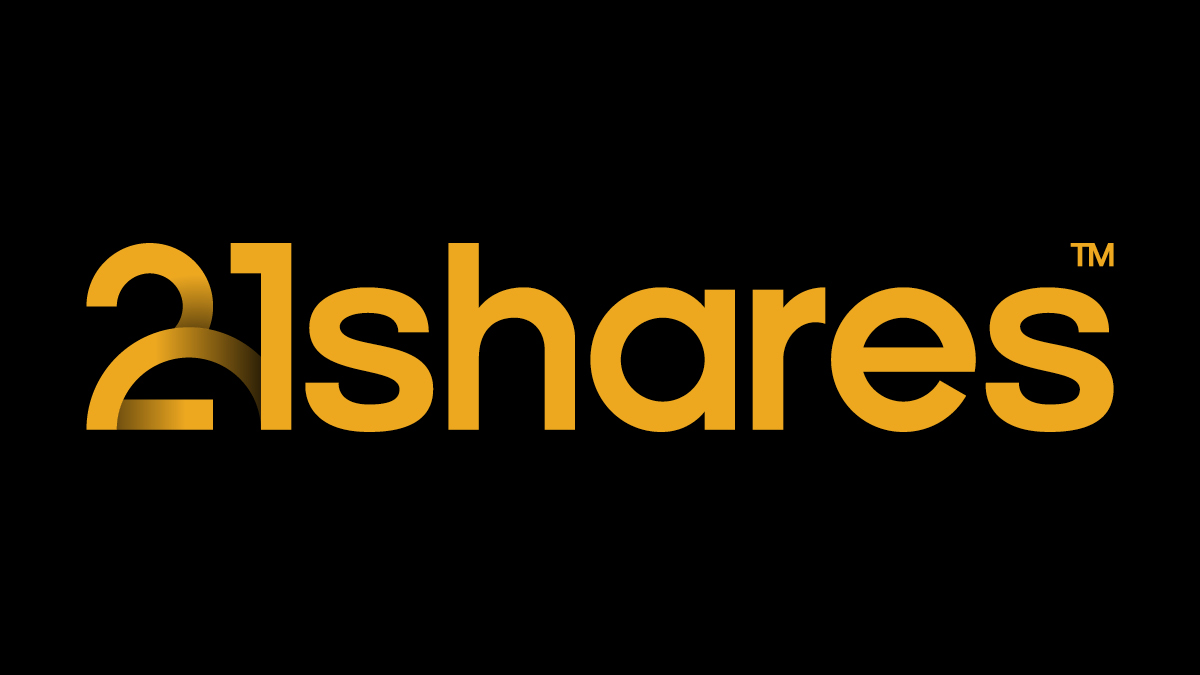
Bitcoin’s price has taken a different path from U.S. stocks over the past weeks. While major indexes such as the S&P 500 and Nasdaq have experienced declines, Bitcoin has risen to its highest levels in recent months, positioning itself as a safe haven, similar to gold. Understand how Bitcoin and gold have been synced for some time and what the correlation might look like in the future.
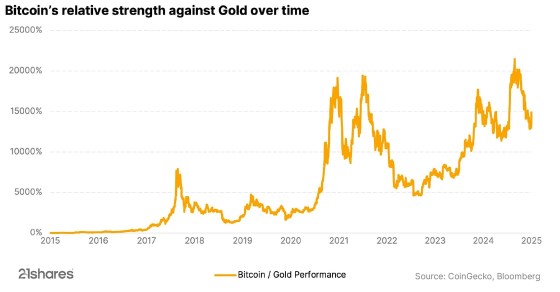

Ethereum’s big reboot: Why investors should be excited
Ethereum is making headlines due to a potential change in its core software, the Ethereum Virtual Machine (EVM), that operates across thousands of computers, enabling Ethereum to execute smart contracts and securely track transactions. However, Ethereum’s co-founder, Vitalik Buterin, has suggested replacing the EVM with a new system called RISC-V. Discover why the change is necessary and its potential impact on investors.
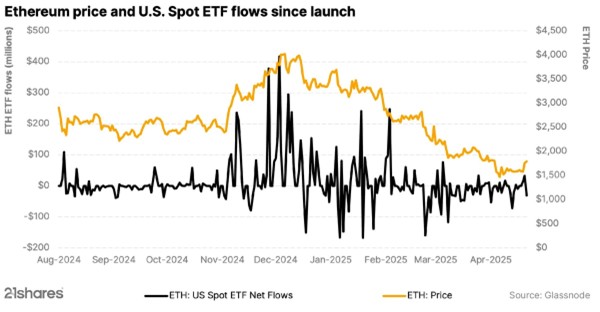


Thousands of altcoins, but no altcoin season: What comes next?
Over the past year, the crypto market has entered a new era. Bitcoin hit new all-time highs, outperforming other cryptocurrencies and decoupling from the stock market. Unlike previous cycles, the expected “altcoin season” did not occur, with Bitcoin remaining strong and money not flowing into other cryptocurrencies or altcoins. So, the big question is: Has altcoin season run its course?
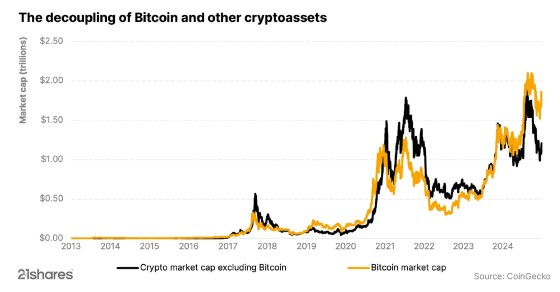

Research Newsletter
Each week the 21Shares Research team will publish our data-driven insights into the crypto asset world through this newsletter. Please direct any comments, questions, and words of feedback to research@21shares.com
Disclaimer
The information provided does not constitute a prospectus or other offering material and does not contain or constitute an offer to sell or a solicitation of any offer to buy securities in any jurisdiction. Some of the information published herein may contain forward-looking statements. Readers are cautioned that any such forward-looking statements are not guarantees of future performance and involve risks and uncertainties and that actual results may differ materially from those in the forward-looking statements as a result of various factors. The information contained herein may not be considered as economic, legal, tax or other advice and users are cautioned to base investment decisions or other decisions solely on the content hereof.
Nyheter
WELC ETF ger exponering mot företag inom sällanköpsvaror
Publicerad
7 timmar sedanden
28 april, 2025
Amundi S&P Global Consumer Discretionary ESG UCITS ETF DR EUR (D) (WELC ETF) med ISIN IE00061J0RC6, strävar efter att spåra S&P Developed Ex-Korea LargeMidCap Sustainability Enhanced Consumer Discretionary index. Det S&P-utvecklade ex-Korea LargeMidCap Sustainability Enhanced Consumer Discretionary-indexet spårar stora och medelstora företag från den diskretionära konsumentsektorn. ESG-kriterier (miljö, social och bolagsstyrning) beaktas vid valet av värdepapper.
Den börshandlade fondens TER (total cost ratio) uppgår till 0,18% p.a.. Amundi S&P Global Consumer Discretionary ESG UCITS ETF DR EUR (D) är den billigaste ETF som följer S&P Developed Ex-Korea LargeMidCap Sustainability Enhanced Consumer Discretionary index. ETFen replikerar det underliggande indexets prestanda genom fullständig replikering (köper alla indexbeståndsdelar). Utdelningarna i ETFen delas ut till investerarna (Årligen).
Amundi S&P Global Consumer Discretionary ESG UCITS ETF DR EUR (D) är en mycket liten ETF med 5 miljoner euro förvaltade tillgångar. Denna ETF lanserades den 20 september 2022 och har sin hemvist i Irland.
Investeringsmål
AMUNDI S&P GLOBAL CONSUMER DISCRETIONARY ESG UCITS ETF DR – EUR (D) försöker replikera, så nära som möjligt, resultatet för S&P Developed Ex-Korea LargeMidCap Sustainability Enhanced Consumer Discretionary Index (Netto Total Return Index). Denna ETF har exponering mot stora och medelstora företag i utvecklade länder. Den innehåller uteslutningskriterier för tobak, kontroversiella vapen, civila och militära handeldvapen, termiskt kol, olja och gas (inkl. Arctic Oil & Gas), oljesand, skiffergas. Den är också utformad för att välja ut och omvikta företag för att tillsammans förbättra hållbarhet och ESG-profiler, uppfylla miljömål och minska koldioxidavtrycket.
Handla WELC ETF
Amundi S&P Global Consumer Discretionary ESG UCITS ETF DR EUR (D) (WELC ETF) är en europeisk börshandlad fond. Denna fond handlas på flera olika börser, till exempel Deutsche Boerse Xetra.
Det betyder att det går att handla andelar i denna ETF genom de flesta svenska banker och Internetmäklare, till exempel Nordnet, SAVR, DEGIRO och Avanza.
Börsnoteringar
Största innehav
Denna fond använder fysisk replikering för att spåra indexets prestanda.
| Namn | Valuta | Vikt % | Sektor |
| AMAZON.COM INC | USD | 18.89 % | Sällanköpsvaror |
| TESLA INC | USD | 13.29 % | Sällanköpsvaror |
| HOME DEPOT INC | USD | 5.75 % | Sällanköpsvaror |
| LVMH MOET HENNESSY LOUIS VUI | EUR | 5.44 % | Sällanköpsvaror |
| TOYOTA MOTOR CORP | JPY | 4.58 % | Sällanköpsvaror |
| MCDONALD S CORP COM NPV | USD | 2.63 % | Sällanköpsvaror |
| LOWE S COS INC COM US 0.50 | USD | 2.38 % | Sällanköpsvaror |
| SONY GROUP CORP (JT) | JPY | 2.25 % | Sällanköpsvaror |
| BOOKING HOLDINGS INC | USD | 2.02 % | Sällanköpsvaror |
| TJX COMPANIES INC | USD | 1.89 % | Sällanköpsvaror |
Innehav kan komma att förändras
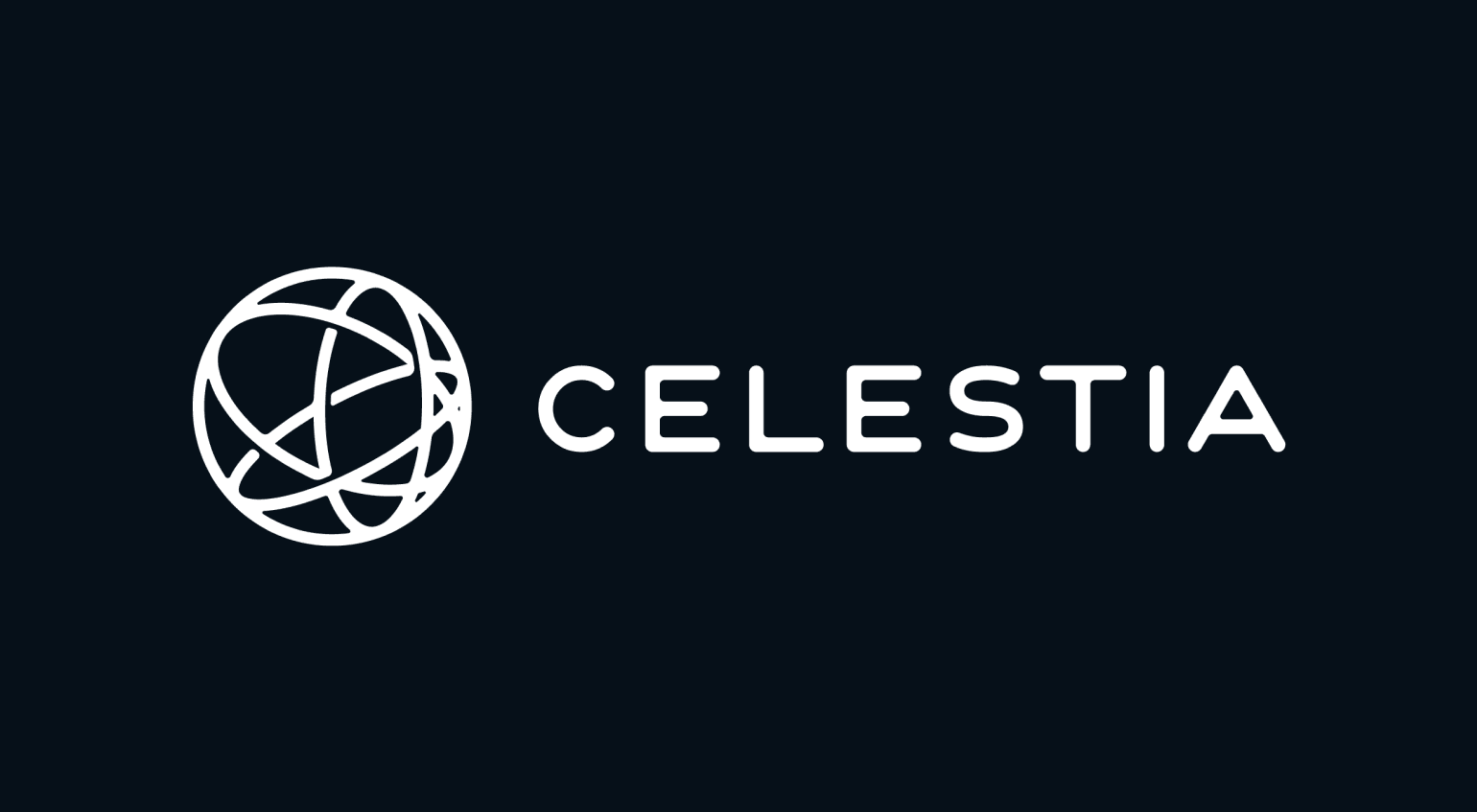
To understand Celestia’s value and its role in the ecosystem, it’s helpful to first understand how traditional blockchain systems are structured.
Most blockchains, like Ethereum or Bitcoin, are monolithic which means they perform all major functions (consensus, data availability, and execution) on a single layer. This design ensures security but according to new modular networks, limits scalability and flexibility.
The modular blockchain thesis, which Celestia is leading, proposes separation of layers and respective responsibilities in the network. Instead of having one network and its validators perform all of its functions, it may be better to have specialized layers:
• Consensus Layer: Ensures that all nodes agree on the order of transactions.
• Data Availability Layer: Ensures transaction data is accessible to all participants.
• Execution Layer: Processes the actual logic and computation of smart contracts.
By unbundling these components, developers can build more efficient, flexible systems that scale far beyond what monolithic blockchains can support. Not all applications need similar levels of security and not all applications need to scale up to millions of transactions. Additionally, one application might be scaling beyond the capabilities of its host network, severely effecting the available data throughput of other applications. This limits developers to the monolithic technology stack provided by a virtual machine such as Ethereum’ EVM.
The Issue of Data Availability
One of the most misunderstood yet crucial components of any blockchain is data availability. In simple terms, it ensures that the data behind each block is fully accessible and verifiable by all participants in the network. Another way to describe it is as the confidence a user can have that the data required to verify a block is really available to all network participants. Data availability is therefore important to all stakeholders of the blockchain ecosystem.
If a block producer withholds data, then nodes cannot verify the block, which leads to potential censorship or fraud.
Traditionally, a blockchain network can offer data availability with the following mechanisms:
• Full Replication: Every node stores the entire blockchain and verifies all data. Secure but not quite scalable.
• Sharding: Breaks the blockchain into smaller pieces (shards), spreading data across nodes. Scalable but highly complex to implement.
• Committee-Based Models: Small groups of nodes are trusted to verify data availability. Efficient, but less decentralized.
Celestia takes a completely different approach using a novel method called Data Availability Sampling (DAS). Instead of requiring every node to download all data, DAS allows lightweight nodes to randomly sample small chunks of a block. If enough pieces are retrievable, the node can confidently assume the full block is available. This slashes resource requirements while maintaining security and decentralization.
Why Data Availability Matters
Data availability might sound like a nerdy technical term, but it’s one of the most important yet one of less invisible parts of how blockchains work.
Let’s say you’re using a crypto app to trade tokens, store art, or move money. Every time you do something, that action (also referred to as a transaction) needs to be recorded and shared with the rest of the network so everyone agrees it happened. If that data disappears or can’t be verified, the whole system becomes untrustworthy. You might think your tokens moved but if no one else can see that record or a different version of that record, it’s as if it never happened.
Here’s a real-life parallel: imagine a public scoreboard at a sports game. If the scorekeeper shows the score to only a few people and then hides the board, how can the rest of the crowd trust the result? Everyone needs to see the score to believe it’s fair. In crypto, data availability is what makes sure the scoreboard is always visible to all participants at any time.
How DAS Changes the Game
Traditionally, ensuring data availability meant every node had to download and verify the entire block of data for any purpose related to particular data inside the block, like reading a whole newspaper just to check one article. Ethereum and most competing monolithic layer-1’s operate this way. It works, but it’s expensive, slow, and becomes less practical as blockchains scale in terms of data throughput required by its Dapps therefore limiting the types of applications that developers can build.
Celestia’s Data Availability Sampling (DAS) is a breakthrough that lets even simple devices (like smartphones) verify that a block’s data is available—by checking just a few random pieces. If enough pieces are found and correct, the network can be confident the full block is truly there and correct.
This innovation means:
• Light clients can safely participate in the network without downloading everything.
• Rollups and app-chains can post their data to Celestia with minimal overhead.
• Scalability skyrockets without sacrificing decentralization.
Celestia’s Role in Scaling Applications
Celestia is the first blockchain designed specifically to be a modular data availability layer. That means it doesn’t execute smart contracts or handle transactions directly, instead, it provides a foundation for others to build new networks, also referred to as rollups.
Developers can launch rollups or full execution environments, and use Celestia to handle the consensus and data availability side. This unlocks several key benefits:
• Massive scalability: Apps can scale independently from each other.
• Customization: Developers choose their own virtual machines, consensus mechanism and execution logic.
• Decentralization: Thanks to DAS, even small devices can validate the system.
This approach flips the script on how we think about launching and scaling blockchains. Instead of competing for space on a monolithic chain, apps get their own chains, backed by Celestia’s secure and scalable data availability layer while giving developers full stack control over their applications.
Celestia Enables Scalability and Offers Full-Stack Control
Using the restaurant example from Sui vs Aptos. Imagine a big, busy restaurant where the chefs, waiters, and cashiers all work in the same small kitchen. It gets crowded, orders take forever, and sometimes things go wrong while the backlog of orders keeps growing. That’s how traditional blockchains work, doing everything in one place.
Now imagine if the restaurant separated the jobs: the chefs cook in a big kitchen, waiters serve from a clean dining area, and the cashiers handle payments at the front desk. Everything runs smoother, faster, and the restaurant can grow in a environment that is less prone to congestion. That is what Celestia is doing for blockchains. Let’s say a small specialty restaurant opens up next door, leveraging Celestia’s register and order management system. That new restaurant can fully focus on delivering the best food and experience to customers, knowing that Celestia’s technology won’t be the limiting factor when scaling up their kitchen. The modularity that Celestia’s restaurant offers is allowing a lot of small scale restaurants to exist without the overhead of individual administrative work. It goes even a step further, Celestia allows you to just use it register while letting smaller restaurants pick their own kitchen (execution environment) and order management system (consensus layer).
In conclusion, Celestia is challenging the believe that blockchains should always be monolithic and blockchains need to offer the same technology stack to all developers on its chain. It is a significant leap forward in the crypto ecosystem and opens possibilities that were previously not feasible.
Diversify Crypto Exposure to Modular Blockchain Technology with the VanEck Celestia ETN
Key features of the VanEck Celestia ETN
• Celestia enables secure scaling of blockchain applications with modular technology.
• Fully-collateralized by TIA in cold-storage.
• Total return of TIA: Tracks the MarketVector™ Celestia VWAP Close Index (MVTIAV).
Why VanEck Crypto ETNs? Here’s why:
• With nearly 70 years in asset management and a strong track record in crypto, we bring deep industry knowledge and proven reliability.
• We combine traditional financial strengths with cutting-edge crypto innovation, backed by a CEO who truly believes in crypto’s future.
• We ensure clarity in our product structures and avoid high-risk or opaque practices, with assets fully backed by cryptocurrency in secure cold storage.
• Our assets are secured by a licensed European bank in Liechtenstein, providing top-tier compliance and security.
• We use the safest institutional custody setup available, prioritizing your security over cost savings.
Crypto is an asset class with high potential returns but investing in digital assets comes with great risk, why choose products that potentially introduce even more risks? Choose VanEck for a secure, transparent, and expertly managed crypto investment experience.
Main Risk Factors:
Investors should note that there is no direct ownership for the crypto assets, but a claim against Issuer to receive such assets.
• Complexity risk: The complexity of the project and its technological concepts make it challenging to assess its viability and valuation.
• Adoption risk: Celestia introduces additional adoption risk as it is uncertain if the concept of modular blockchains will succeed.
• Technology risk: Celestia introduces additional technology risk due to the technology being less mature and therefore could be more prone to bugs and exploits.
• Regulatory Risk: market disruptions and governmental interventions may make digital assets illegal.
• Risk of Losses and Volatility: The trading prices of many digital assets have experienced extreme volatility in recent periods and may continue to do so. There is a risk of total loss as no guarantee can be made regarding custody due to hacking risk, counterparty risk and market risk.
• Other risks specific to this ETN’s Digital Assets can also be found on the VanEck Crypto Academy.
This is not financial research but the opinion of the author of the article. We publish this information to inform and educate about recent market developments and technological updates, not to give any recommendation for certain products or projects. The selection of articles should therefore not be understood as financial advice or recommendation for any specific product and/or digital asset. We may occasionally include analysis of past market, network performance expectations and/or on-chain performance. Historical performance is not indicative for future returns.
IMPORTANT INFORMATION
For informational and advertising purposes only.
This information originates from VanEck (Europe) GmbH, Kreuznacher Strasse 30, 60486 Frankfurt am Main, Deutschland and VanEck Switzerland AG, Genferstrasse 21, 8002 Zurich, Switzerland.
It is intended only to provide general and preliminary information to investors and shall not be construed as investment, legal or tax advice. VanEck (Europe) GmbH and its associated and affiliated companies (together “VanEck”) assume no liability with regards to any investment, divestment or retention decision taken by the investor on the basis of this information. Views and opinions expressed are current as of the date of this information and are subject to change with market conditions. Certain statements contained herein may constitute projections, forecasts and other forward looking statements, which do not reflect actual results. VanEck makes no representation or warranty, express or implied regarding the advisability of investing in securities or digital assets generally or in the product mentioned in this information (the “Product”) or the ability of the underlying Index to track the performance of the relevant digital assets market.
Investing is subject to risk, including the possible loss of principal up to the entire invested amount and the extreme volatility that ETNs experience. You must read the prospectus and KID before investing, in order to fully understand the potential risks and rewards associated with the decision to invest in the Product. The approved Prospectus is available at www.vaneck.com. Please note that the approval of the prospectus should not be understood as an endorsement of the Products offered or admitted to trading on a regulated market.
The underlying Index is the exclusive property of MarketVector GmbH, which has contracted with CC Data Limited to maintain and calculate the Index. CC Data Limited uses its best efforts to ensure that the Index is calculated correctly. Irrespective of its obligations towards the MarketVector GmbH, CC Data Limited has no obligation to point out errors in the Index to third parties.
Investing is subject to risk, including the possible loss of principal up to the entire invested amount and the extreme volatility that ETNs experience. You must read the prospectus and KID before investing, in order to fully understand the potential risks and rewards associated with the decision to invest in the Product. The approved Prospectus is available at www.vaneck.com. Please note that the approval of the prospectus should not be understood as an endorsement of the Products offered or admitted to trading on a regulated market.
Performance quoted represents past performance, which is no guarantee of future results and which may be lower or higher than current performance.
Current performance may be lower or higher than average annual returns shown. Performance shows 12 month performance to the most recent Quarter end for each of the last 5yrs where available. E.g. ’1st year’ shows the most recent of these 12-month periods and ’2nd year’ shows the previous 12 month period and so on. Performance data is displayed in Base Currency terms, with net income reinvested, net of fees. Brokerage or transaction fees will apply. Investment return and the principal value of an investment will fluctuate. Notes may be worth more or less than their original cost when redeemed.
Index returns are not ETN returns and do not reflect any management fees or brokerage expenses. An index’s performance is not illustrative of the ETN’s performance. Investors cannot invest directly in the Index. Indices are not securities in which investments can be made.No part of this material may be reproduced in any form, or referred to in any other publication, without express written permission of VanEck.
© VanEck (Europe) GmbH / © VanEck Switzerland AG

From digital asset to safe haven: Why is Bitcoin acting like gold?

WELC ETF ger exponering mot företag inom sällanköpsvaror

Introduction to Celestia

YYYY ETF använder optioner för att ge månadsvis utdelning

Virtune lanserar Virtune Stellar ETP på Nasdaq Stockholm

Crypto Market Risks & Opportunities: Insights on Bybit Hack, Bitcoin, and Institutional Adoption

Montrose storsatsning på ETFer fortsätter – lanserar Sveriges första globala ETF med hävstång

Svenskarna har en ny favorit-ETF

MONTLEV, Sveriges första globala ETF med hävstång

Sju börshandlade fonder som investerar i försvarssektorn
Populära
-
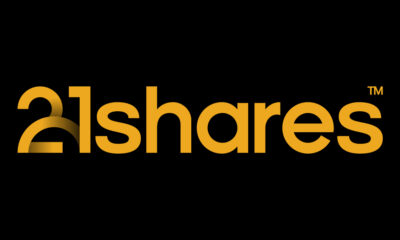
 Nyheter4 veckor sedan
Nyheter4 veckor sedanCrypto Market Risks & Opportunities: Insights on Bybit Hack, Bitcoin, and Institutional Adoption
-
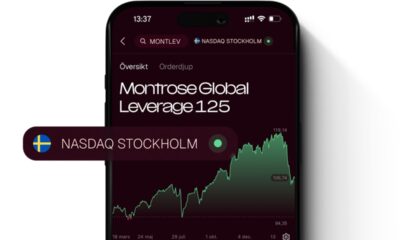
 Nyheter4 veckor sedan
Nyheter4 veckor sedanMontrose storsatsning på ETFer fortsätter – lanserar Sveriges första globala ETF med hävstång
-

 Nyheter4 veckor sedan
Nyheter4 veckor sedanSvenskarna har en ny favorit-ETF
-
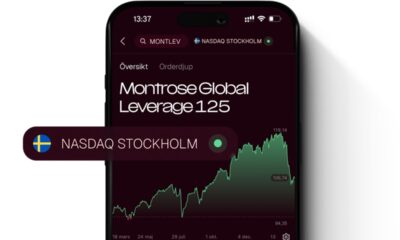
 Nyheter4 veckor sedan
Nyheter4 veckor sedanMONTLEV, Sveriges första globala ETF med hävstång
-

 Nyheter3 veckor sedan
Nyheter3 veckor sedanSju börshandlade fonder som investerar i försvarssektorn
-

 Nyheter3 veckor sedan
Nyheter3 veckor sedanVärldens första europeiska försvars-ETF från ett europeiskt ETF-företag lanseras på Xetra och Euronext Paris
-

 Nyheter3 veckor sedan
Nyheter3 veckor sedanEuropeisk försvarsutgiftsboom: Viktiga investeringsmöjligheter mitt i globala förändringar
-

 Nyheter3 veckor sedan
Nyheter3 veckor sedan21Shares bildar exklusivt partnerskap med House of Doge för att lansera Dogecoin ETP i Europa


